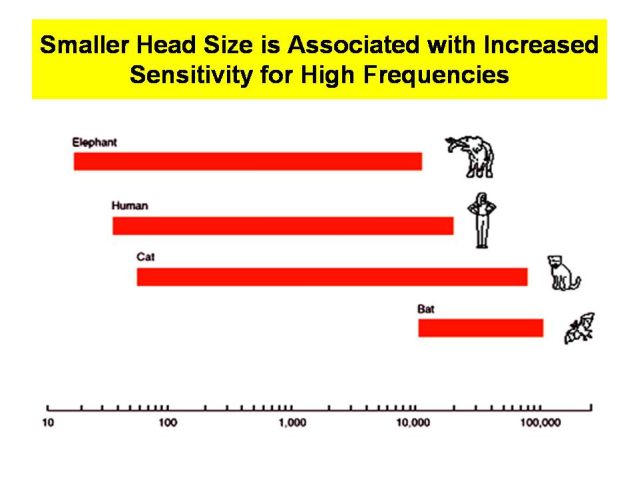Anxiety
Can Dogs Predict Earthquakes?
Many hours before an earthquake dogs may begin to act restless and distressed.
Updated June 13, 2024
Key points
- There have been many reports of dogs and other animals apparently detecting earthquakes before they happen.
- A serendipitous finding suggests that dogs may hear underground events preceding earthquakes.
- Several analyses suggest that it is the high-frequency sounds associated with shallow earthquakes that matter.

There has been a heated debate among scientists about whether dogs and other animals have the ability to predict seismic events such as earthquakes or avalanches before they occur. This idea does not seem to sit well with hard-nosed sensory and neuropsychologists since predicting future events of this nature has been taken by some people as proof that dogs have some kind of ESP of other psychic sensory abilities. Still there are dozens of reports of dogs in the Alps, who warned travelers, or members of search and rescue teams of an impending avalanche in time for them to escape or take some safer mountain path. In addition there are reports from reliable observers that hours (or sometimes days) before a major earthquake, dogs begin pacing and acting distressed and restless as if they sense coming trouble that their human companions cannot.
The suggestion that animals can sense earthquakes before they occur was first recorded in Greece in 373 BC, when dogs howled and many rats, weasels, snakes, and centipedes moved to safety several days before a destructive earthquake. In China and Japan animals are considered to be an integral part of their national earthquake warning systems. One early indication of their usefulness occurred in 1975, when officials in the Chinese city of Haicheng were alarmed by odd and anxious behaviors of dogs and other animals. These observations led them to order 90,000 residents to evacuate the city. Only a few hours later a 7.3 magnitude earthquake destroyed nearly 90 percent of the city’s buildings. Since then a number of studies have suggested that a variety of animals, including dogs, can anticipate similar earth tremors.
A Serendipitous Finding
I must admit that I was skeptical about many of these reports; however a series of chance events and circumstances gave me the opportunity to personally explore the ability of dogs to predict earthquakes. At the time I was collecting data on another issue, namely the question of whether dogs are susceptible to Seasonal Affective Disorder. This is commonly referred to as the “winter blues” which, in humans, shows up as depression and anxiety that comes on during the winter months or other periods of time when there is little sunshine during the daylight hours. I was gathering data on this issue from 200 dogs who were being monitored over the web for the eight months going from September through April. Twice a week owners were sent an e-mail and asked to rate the activity level and any signs of anxiety in their dog over the previous day. As sometimes in research, the hypothesis was not being supported. In general there was little day to day variability in group averages, however one particular day, February 27, 2001, showed a sharp increase in activity and anxiety. Of the 193 dogs that reported that day, 47 percent showed significantly higher activity levels and 49 percent showed and marked increase in anxiety. By chance, I had captured data on the day before a 6.8 earthquake shook the Pacific Northwest. The quake’s focus was not far from Vancouver, Canada, and it shook my city with enough intensity to cause damage to some structures. Given the unexpected changes in the behavior of the dogs I was monitoring I began to wonder if they were somehow aware of the earthquake that was building up and would occur some hours later.
Can Dogs Hear the Coming Earthquake?
It has been suggested that one possible explanation for animals “predicting” earthquakes is that they have very good hearing ability. This sensitivity may allow them to hear seismic activities that precede earthquakes (such as the scraping, grinding and breaking of rocks underground). One fact in my data seemed to support this possibility. Among the 200 dogs I was observing 14 were reported as having hearing impairments. Consistent with the idea that dogs might be hearing seismic events in advance of the quake was the finding that only one of these dogs with poor hearing showed any significant increase in anxiety or activity, and that one dog was living with a normal hearing dog (not in the sample).
To further explore the possibility that it was sound information from the upcoming earthquake that the dogs were responding to, I divided the dogs in my study into those with lopped or floppy ears and those with pricked ears. In dogs with floppy ears the ear flap blocks incoming sounds to some degree which means that they should be somewhat less able to hear the earth movement related sounds. The data seemed to bear out the idea that dogs were hearing something that made them anxious since the overall increase in anxiety and activity preceding the earthquake was less for the floppy eared dogs.
It's the High Frequencies That Matter
Ear flaps don’t diminish all sounds to the same degree. The effect is greater for the higher frequency sounds. I verified this by putting the ear flap of my beagle between a 90 dB sound source and a sound measuring sensor. For a 1000 Hz tone the sound behind the flap was 6 dB less, while for a high frequency sound of 14000 Hz the ear flap lowered the sound intensity by 31 dB. This result corroborates the suggestion that what the dogs were hearing was an important factor and suggests that it might be high frequency sounds (such as rocks breaking from the strain of earth movements) that are most critical.
One last analysis seems consistent with this. At least among mammals, research shows that animals with smaller head sizes have better high frequency hearing. There are good evolutionary and adaptive reasons for this. Animals can determine the direction that a sound is coming from by the difference in the time that it takes for the sound to reach the ear closest to source, compared to the time that it takes to reach the more distant ear, and determining direction is also aided by the difference in the sound intensity between the two ears. With a small head size the time differences are reduced and furthermore, the longer wave lengths of low frequency sounds tend to bend around the skull diminishing the usefulness of the sound intensity clue to direction. Animals with smaller head sizes seem to have compensated for this difference with better sensitivity to higher frequency sounds.

Therefore I grouped the dogs according to head size (using average distance between the ears per breed. When I looked at the changes in behavior prior to the earthquake, the dogs with the smallest head sizes tended to show considerably greater increases in anxiety and activity level before the earthquake than did the dogs with the largest head sizes. Thus it looked as if it was the higher frequency sounds associated with seismic activities which allowed the dogs to anticipate the impending earthquake.
Dogs May Hear More Shallow Earthquakes
Taken together these results are suggestive. It appears that there is an increase in observable activity and anxiety in dogs in the 24 hours preceding an earthquake. Observations that dogs with poor hearing are not affected, and dogs with floppy ears are less affected, hint that animals are responding to an auditory cue. The fact dogs with smaller head size are more responsive is consistent with a presumption that higher frequency sounds serve as the signal predicting an impending earthquake, perhaps from rocks scraping or breaking underground.
The fact that it is the high frequency sounds that dogs seem to be responding to also explains why animals seem to anticipate some earthquakes but not others. The earthquake that my group of dogs was reacting to involved a relatively shallow movement of the tectonic plates. If the source of the earthquake involved a movement deep underground the information allowing dogs to foresee the event might not be available since high frequencies have less power than low frequency sounds and therefore may be absorbed by the intervening mass of earth.
Obviously a study based upon a single event, even though the sample size is reasonably large, cannot be considered to a definitive proof that dogs can anticipate earthquakes. However, taken together I believe that these results are internally consistent and suggest that it is dogs’ hearing abilities, specifically their sensitivity to higher frequency sounds, that allows them to serve as sensors for approaching seismic events such as earthquakes and avalanches. They respond to these sounds by becoming restless and distressed. Thus their ability to predict a forthcoming earth tremor certainly does not require some form of ESP or any other special sensory ability.
Stanley Coren is the author of many books including: Born to Bark, The Modern Dog, Why Do Dogs Have Wet Noses? The Pawprints of History, How Dogs Think, How To Speak Dog, Why We Love the Dogs We Do, What Do Dogs Know? The Intelligence of Dogs, Why Does My Dog Act That Way? Understanding Dogs for Dummies, Sleep Thieves, The Left-hander Syndrome
Copyright SC Psychological Enterprises Ltd. May not be reprinted or reposted without permission
References
Coren, S. (2006, November). Can dogs detect earthquakes? A possible auditory answer. Paper delivered at the Psychonomic Society meetings Houston, Texas.




